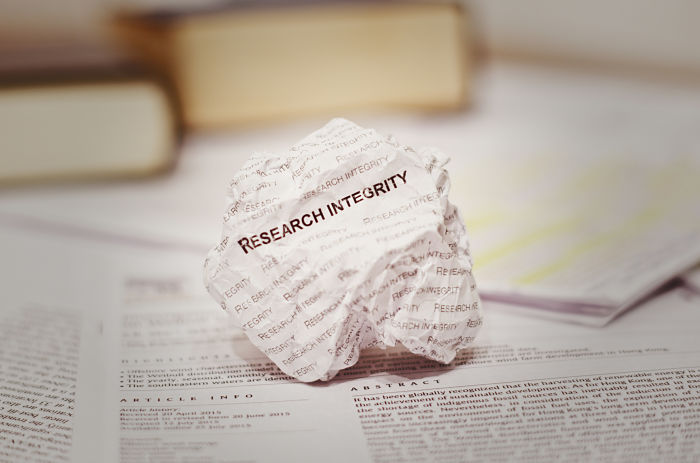COVID-19, Face Masks and Research Integrity

One of the things I do in the day job is think about research ethics and research integrity. I have just finished working with a team to support policy development in these areas by the European Commission. The PRO-RES project focused on the non-medical sciences, largely on the assumption that the biomedical sciences already had effective means of promoting good practice. The commission recognized, however, that attempts to apply these to research in other disciplines had thrown up important operational difficulties such that the principles required translation and adaptation.
My experience with the relationship between research and policy during the COVID pandemic has, though, led me to wonder whether the biomedical sciences are quite as perfect as they like to make out. Our project struggled with think-tank social research, for example, which was presented to policymakers as objective but was designed to generate results supportive of the sponsors’ prior value positions. When I see otherwise respected biomedical scientists being quoted as flatly asserting that ‘face masks work to control transmission of COVID-19,’ I wonder whether something similar is going on.
In a previous post I drew attention to the fragile evidence base for the value of face masks. Since then, the UK Health Security Agency has issued another review which again emphasizes the poor quality of most of the studies discussed before concluding that:
“These results are broadly in line with the results of our previous review; however, the addition of [randomized controlled trials] and substantially more individual-level observational studies increase the certainty of the results and strengthens the evidence for the effectiveness of face coverings in reducing transmission in community settings.”
There is a clear logical fallacy in concluding that a pile-up of weak observational studies somehow equates to stronger evidence, rather than a greater volume of low-quality evidence. The RCTs cited are the Danish study, which the authors dismiss as lacking precision, and the pre-print Bangladesh study, some of whose weaknesses are discussed. Since the UKHSA report was published, further analysis of the original data from this study has shown that its results are even more inconclusive than originally stated. With cloth masks, efficacy is no more than 7 percent: given the non-linear relationship between efficacy and risk reduction, this is barely different from zero.
These UKHSA reports expose the bias in the literature they review. If there were a substantial benefit from masks, we should expect to see a strong signal even from weak studies. In the absence of such a signal, it becomes even more important to look for the downsides. If science is to be anything more than a resource for advocacy, it needs to look just as hard for harms as it does for benefits.
The only systematic review of direct harms underlined the lack of evidence. Most studies either did not collect data or only reported it in a cursory fashion. The contexts of use and types of mask varied so much that it was not possible to reach general conclusions. It seemed that a proportion of wearers developed skin irritation and headaches and there was some impact on respiratory function. However, the review is better treated as an inventory of issues for investigation than a definitive assessment.
Another justification for masks is protection of immunocompromised or immunosuppressed people. There are thought to be around 500,000 such people in the UK. Of course this justification assumes that masks are effective and overlooks the fact that people with these conditions would always have been advised to be careful in their social interactions, especially when winter respiratory viruses are circulating. Their interests need to be balanced with those of people with communication disorders, neurodiverse conditions or previous experiences of trauma. The first two categories alone would amount to something like 20 million people, although many would not be severely impacted by mask wearing. Experiences of trauma are more difficult to estimate because many cases are unreported. They will include people who have experienced rape or other assaults.
When I first raised the point, I was contacted by someone with experience of the Bosnian War who was experiencing flashbacks of the masked fighters who had come to her village and shot all the men and boys. This is not, of course, a simple question of one minority outnumbering another but of establishing that the issue affects a non-trivial number of people. It is a challenge to the ableism frequently seen in claims, on Twitter and elsewhere, that mask-wearing is a minor inconvenience that anyone should be able to tolerate and to which only wimps object. Mask mandates will lead to social exclusion and mental health problems on a scale significant enough to be measured and weighed against any benefits.
Finally, we must take account of the specific impact on children. It is extraordinary that, despite the substantial body of research in linguistics, education and psychology on the importance of faces for the development of social, language and cognitive skills in children, there is no authoritative review of the implications of covering those faces for prolonged periods. This is not novel science – it is a body of work that has been around since at least the 1970s when video recording and eye tracking began to develop as research tools. A recent pre-print from a large longitudinal study underlines the damage to young children’s development resulting from the general context of restrictions on their lives although the specific impact of masks cannot be distinguished.
When you find a scientist or policymaker, however eminent, popping up on broadcast media, being quoted in print or posting declarations on social media that masks work and are an unequivocal benefit, you might like to think of this pledge incorporated in the PRO-RES Accord:
“We will communicate, employ and/or apply only high quality evidence, research or enquiry, in other words evidence that has been undertaken, gathered, collated and analyzed using sound, robust and ethical methods appropriate to the task.”
Are exaggerated claims about the effectiveness of masks really consistent with the emerging European standard of research integrity or are we adopting some British variant that is less demanding?

































































































